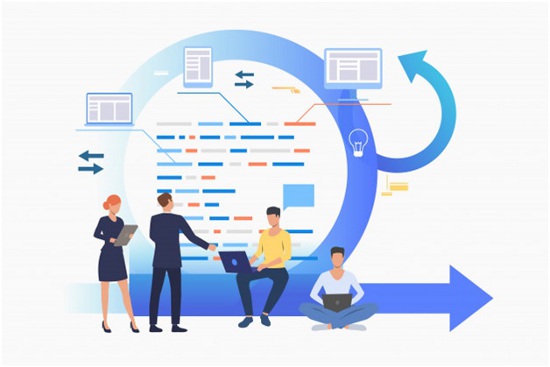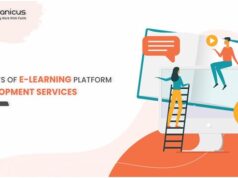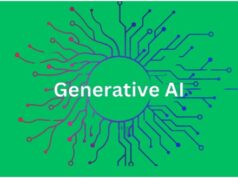ERP introductions are very demanding and complex, especially in larger organizations. No one who can think straight ahead would to volunteer for a project that requires a lot of effort to achieve a result that no one is satisfied with. It’s all about introducing software. Why is that?


ERP introductions are better than their reputation
In the headlines appear ERP introductions not only but mainly when they go in the pants. Positive reports are usually available only as press releases and reference reports (often overstated case studies) from the software vendors involved. How well the introduction actually went here, can not be determined with certainty. Nevertheless, many companies are successfully implementing their ERP system, in terms of implementation time, budget compliance and project goals.
It is clear that a successful manufacturing ERP implementation can only succeed if the involved parties are highly committed. After all, the employees have to handle the project alongside their day-to-day business. It is also clear that the classic stumbling blocks of a project have to be cleared out of the way. But in ERP projects, there are more typical challenges that make the whole thing complex:
Standardization vs. individualization
An organization tries to optimize its own processes and resources. They are adapted to the internal and external requirements and thus individualized. This applies both to a company as a whole and to its units (divisions, departments, business units), both for companies that replace an ERP system and those that introduce one for the first time.
The optimization and individualization in the individual areas of an organization does not necessarily lead to optimal overall processes or an optimal overall organization (keyword “silos”, “garden thinking”). For the optimization of the overall processes, higher-level approaches are needed. This includes so-called integrated ERP systems in which the most important processes of an organization can be mapped.
This raises an essential question: How much standardization is sensible and how much customization is necessary? – one of the key issues in the introduction of cross-enterprise ERP solutions. Answering this question is anything but easy. On the one hand, different perspectives are relevant: business perspective, the management perspective, the view of IT and the ERP system. At the same time, different requirements are necessary for different areas. For areas closer to the company’s core business, more standardization may be more useful than others. Development and project-oriented areas need more individual freedom to meet market requirements than the production of standard parts.
Particularly individualized are ERP systems in companies that develop their own software. Changing to a ” standard software ” is often a big challenge here. Either way, the question of the degree of standardization is a tightrope walk that needs to be addressed in an ERP implementation and significantly contributes to the complexity of the project.
Moving Targets
Of course, the goal of an ERP implementation is always the successful commissioning of the new ERP solution in your own organization. But companies are not static. They change and faster and faster. This can also change the goals in an ERP project. Such “moving targets” may be due to organizational, technical or business changes:
- The company buys a company that will also be integrated into the new ERP system
- The company opens a new business unit or outsources an existing one
- The company expands into a new region or closes a branch
- The company is rebuilding the internal organization
- The corporate purpose is changing
- The number of users, articles or transactions changes
- System environment or IT strategy are changing
Changing goals can have little and no impact on ERP adoption. However, if ERP software is to be heavily integrated into the processes, moving targets usually have a major impact on the project. As a rule, the following areas of a project are affected:
- The specialists needed in the project team
- The project costs
- The throughput times in the project
- The schedules
- The project environment
Businesses have to evolve and change. Moving Targets are therefore a fact that you must be able to handle in the project. ERP projects often run for two or more years. In long-running projects, goals can change several times. Ultimately, it is important to examine each case separately and assess which measures must be taken. And as consistently as possible, be it an extension of the project or its demolition.
Integration management
Decisive for the successful introduction of ERP systems is that all relevant areas, persons and institutions are considered early and to the necessary extent and coordinated. The larger, more distributed, smaller or more diverse an organization is, the greater the challenge of integrating everything. Integration can, however, create a high level of added value: Collaboration becomes more efficient overall and the quality of the results increases.
Integration does not primarily refer to the world of IT systems. If only in one area the feeling arises, he works with an inappropriate software solution because someone else has chosen the system, it will be difficult. Integration is important for the acceptance and thus the support and further development of an ERP software at the customer.
Parallel operation
The easiest way is an ERP implementation when an existing ERP system is replaced without any changes. However, the rule is that a new ERP solution will replace, connect, renew or rebuild several existing systems. In extreme cases, several parallel ERP systems used in an organization are replaced. Such situations arise when companies have grown through acquisitions or mergers.
The system change is then often not useful everywhere (“BigBang”). Therefore, step-by-step rollout procedures are used. In addition, in the beginning, only the priority requirements may be fulfilled by the new ERP software in order not to overburden the project. Conversely, this means that over a period of time, several systems must be operated and developed in parallel: the legacy systems, the new ERP solution and intermediate stages that are operated as an interim solution.
How the transition phase will look exactly what impact the transition will have on whether and how everything works is hard to predict. At the same time, the challenges of parallel operation and dependencies have to be considered.









